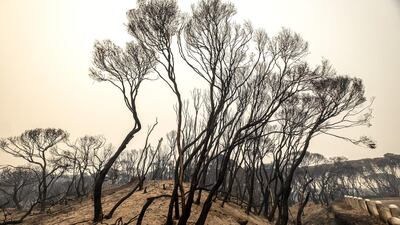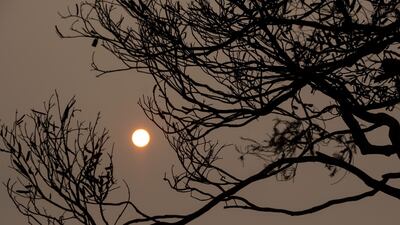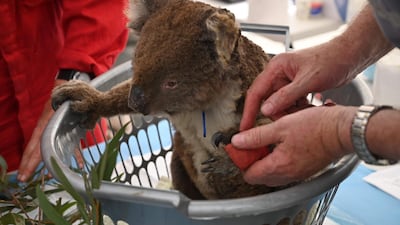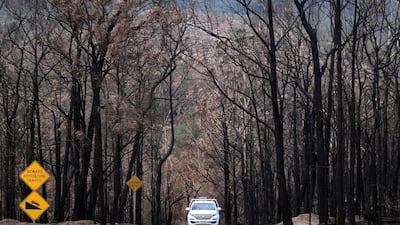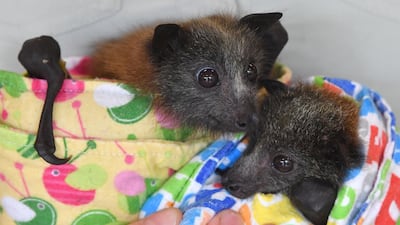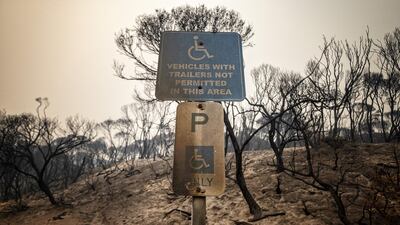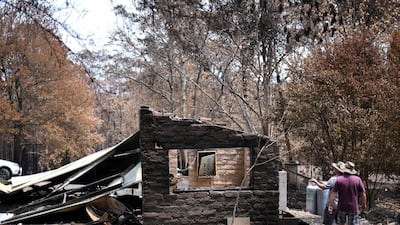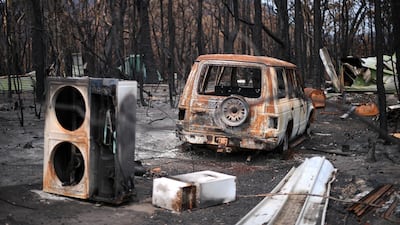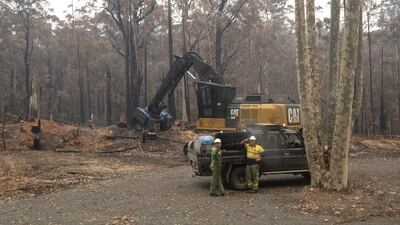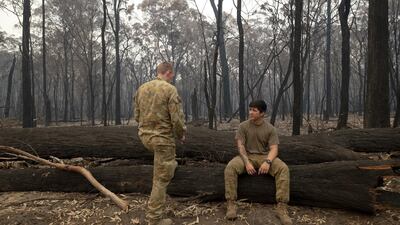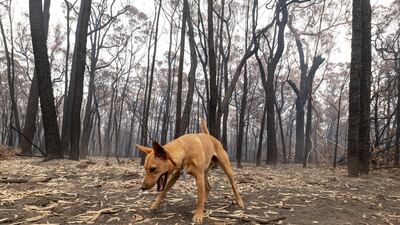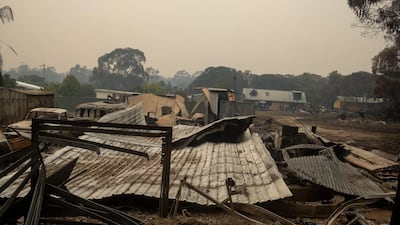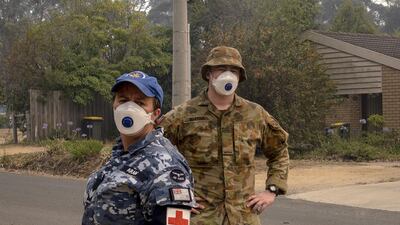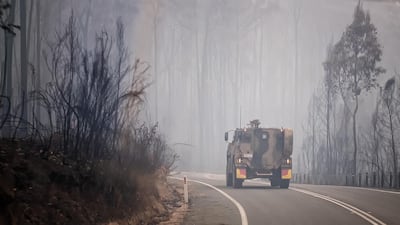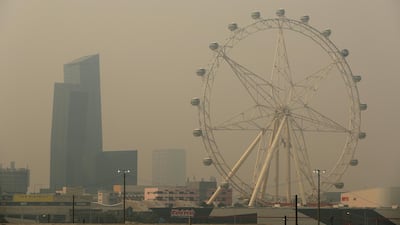Bushfires that have burnt through more than 10 million hectares in Australia could change the country’s delicate ecosystems forever, scientists say.
The crisis is also a precursor of the kinds of conditions that will become frequent worldwide unless global leaders move quickly to curb the greenhouse gas emissions that are driving global warming, new research shows.
Dr Thomas Duff, a bushfire behaviour expert at the University of Melbourne, said the fire season has been “exceptional” and that while it was unlikely it would become the normal annual pattern, exceptional events were becoming more frequent, stronger and harder to predict.
"Considering the nature of these fires and the vegetation they're burning - we don't really understand what 'normal' is now," Dr Duff told The National.
The fires, and the prolonged dry weather that preceded them, is also changing the Australian landscape in ways that will affect what areas are likely to burn in future. The crisis has even touched areas previously considered non-flammable, such as rainforests.
“Some of the vegetation being burnt is quite sensitive to fire, so frequent hot fires will convert it into something else,” Dr Duff said. “If we get similar conditions frequently, we can expect that some of the 'wet' forest types will transition into drier, more sclerophyllous vegetation.”
Dr Duff said the dynamics of changing landscapes and fire weather patterns were complex and it would be important to study the current crisis to identify areas for improvement in fire management.
“These current fires are pushing the limits of emergency responders and the community,” he said.
Zoos Victoria reproductive biologist Dr Marissa Parrott said there were fears that fires may have claimed entire ecosystems, as well as many of the animals that live within them.
More than one billion native animals are estimated to have perished so far, with the entire habitats of some vulnerable species now in burnt to ashes. Dr Parrott said each species played a critical role in the ecosystem.
“Massive bushfires, like the ones we are seeing, could change our ecosystems forever,” she said “We will lose many of the delicate smaller plants and animals, and the careful balance of the system will be damaged for decades to come.”
“Some of our species rely on old hollow-bearing trees to live, but trees take hundreds of years to develop hollows big enough for gliders, possums, cockatoos and others.
“These animals have lost their homes – many have lost their lives. Each species from the tiniest insect to the largest of the mammals is important.”
Dr Parrott said many vulnerable species lived in very restricted and specialised areas like alpine boulder fields or small patches of old growth forests and rainforests.
“These species are highly at risk because there are so few of them left,” Dr Parrott said.
“Areas such as rainforest are not meant to burn and do not recover the way some other types of habitat do – we may have lost some of these amazing ecosystems all together in the current fires.”
“Our forests need pollinators, like bats, insects and birds. They need endangered potoroos (a type of marsupial) to help spread the spores of native fungi and keep the forests healthy and functioning,” she said.
Some endangered species, like the Mountain Pygmy-possum, can survive fires by hiding deep in rock crevices.
“However, there is little food available for them once the fires have passed and the plants in their alpine habitat take a long-time to recover,” Dr Parrott said.
“Our alpine zone has had many fires in recent decades and there is often not enough time for plants to grow before the next fire comes. Here critical revegetation and recovery work are crucial.”
Zoos Victoria has set up an emergency wildlife fund and is working with partners to determine immediate and long-term strategies to help each species affected by the fires.
“This may involve increased protection for remaining habitat, increasing control of introduced predators, moving animals to safer locations including into care at zoos, supplementary food and water,” Dr Parrott said.
On top of the environmental toll, the bushfire crisis that been running for months in south-eastern parts of Australia has killed at least 27 people and destroyed more than 2,000 homes. In total it has burnt through more than 10 million hectares of land - an area larger than South Korea or Portugal.
While Australia endures bushfires every summer, the blazes started much earlier than normal and have lasted much longer. They also came after Australia experienced its driest and hottest year on record in 2019, with its highest average maximum temperature of 41.9°C recorded in mid-December.
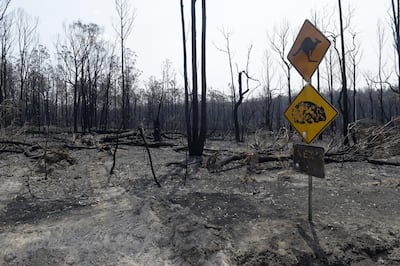
While elements of Australia’s conservative government and media have attempted to play down the effects of man-made climate change on the intensity of the bushfires by blaming arsonists and other factors, a new study suggested clear links.
The review of 57 scientific papers published since 2013, carried out via ScienceBrief.org, found that climate change has led to an increase in the frequency and severity of “fire weather”, which is defined by a combination of high temperatures, low humidity, low rainfall and strong winds.
Fire weather seasons have lengthened across about 25 per cent of the world’s vegetation, leading to a 20 per cent increase in the mean length of fire weather season, according to the data.
Richard Betts, Head of Climate Impacts Research at Britain's Met Office Hadley Centre, who co-authored the review, told a news conference in London on Monday that the world was not going to reverse climate change “on any conceivable timescale”.
“So the conditions that are happening now, they won't go away," Mr Betts said. "Temperature conditions in Australia are extreme at the moment but they are what we expect to happen on average in a world of three degrees of global warming. It brings it home to you what climate change means."
The World Meteorological Organisation says that if nothing is done to stop rising emissions, the global temperature increase could hit 3-5 C this century - more than three times limits agreed in the 2015 Paris Climate Agreement.
